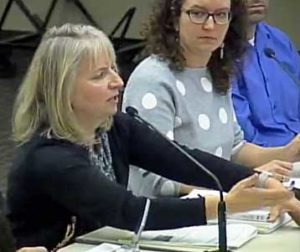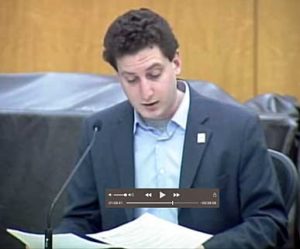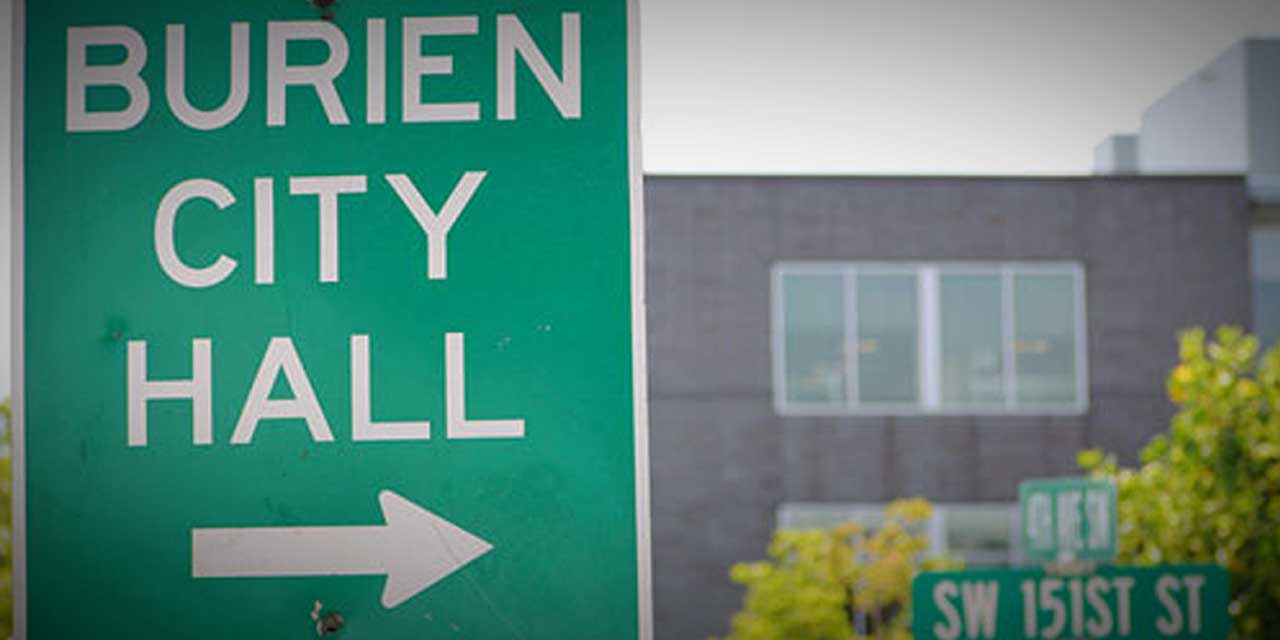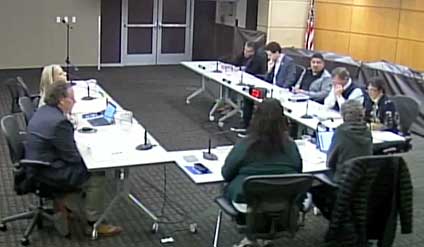By Jack Mayne
A city study of the possibility to increasing safety on SW 152nd Street by changing current head-in parking to back-in parking was tentatively approved, but final decision was deferred to a regular City Council meeting.
 The informal study session Monday night (Oct. 28) decided the change might be warranted after Public Works Director Maiya Andrews and Economic Development Manager Chris Craig reviewed recommendations from the Downtown Mobility Study. The study showed potential advantages and disadvantages of back-in angle parking as opposed to head-in angle parking.
The informal study session Monday night (Oct. 28) decided the change might be warranted after Public Works Director Maiya Andrews and Economic Development Manager Chris Craig reviewed recommendations from the Downtown Mobility Study. The study showed potential advantages and disadvantages of back-in angle parking as opposed to head-in angle parking.
Low number of accidents
Front-in parking is considered dangerous because backing into traffic can cause accidents. A survey showed that a majority of 370 respondents were in favor of back-in parking as do merchants on the street, which would cost an estimated $75,000.
In general, the accident statistics were very low on the street with head-in parking over several years, said Robin Tischmak, deputy public works director. Changing to back-in parking could reduce the number of parking spaces available.
 Councilmembers indicated they approved the change but deferred a final vote to a regular meeting and, in Deputy Mayor Austin Bell words, “with a high high priority.” Councilmember Nancy Tosta wondered if spending the money on what appears to be a non-problem was a good idea whether it was done now or later by Council. The potential change will appear at a later regular Council session, said Mayor Jimmy Matta.
Councilmembers indicated they approved the change but deferred a final vote to a regular meeting and, in Deputy Mayor Austin Bell words, “with a high high priority.” Councilmember Nancy Tosta wondered if spending the money on what appears to be a non-problem was a good idea whether it was done now or later by Council. The potential change will appear at a later regular Council session, said Mayor Jimmy Matta.
Storm drainage
The Council heard a review of the 2012 adoption of a Storm Drainage Master Plan, that takes a five to ten year outlook for for the City’s Surface Water Management Program.
The Council heard that the city staff, working with consultants, in 2018 began working on an update, “including documenting areas where drainage and water quality can be improved, updating the capital project list, and identifying the actions and staff demands for both the current and future regulatory requirements.”
The Council was also told that there will be infrastructure replacement costs associated with the drainage design life of 50 to 100 years and with some neighborhoods not reaching that design life. The cost of replacing 1 percent of 130 miles of pipe would, at current costs, be $350,000.
The annual cost of upgrading and operating the stormwater system is estimated to cost about $4 million, or about $350,000 more than currently allocated.



